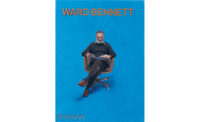Three new books offer inspiration and practical advice for integrated, high-performance design.
|
Integrated Design in Contemporary Architecture, by Kiel Moe.
New York: Princeton Architectural Press, 2008, 208 pages, $65.
Green Building Through Integrated Design, by Jerry Yudelson.
New York: McGraw-Hill GreenSource, 2009, 261 pages, $65.
Integrated Design: GSA/Morphosis/Arup: San Francisco Federal Building, edited by Brian Carter. Buffalo, New York: School of Architecture and Planning, SUNY Buffalo, 2008, 88 pages, $16.50.
It has become increasingly clear that high-performance design depends on an integrated design process.
This is because sustainable, high-performing architecture is not achieved by tossing together a collection of green technologies but by the interaction of many technologies and ideas across disciplines and throughout the chronology of design/construction/operation. This is easy to say, but far harder to implement. Three new books present a rich introduction to integrated, high-performance design. They differ from each other — ranging from the inspirational to the practical — but in combination, they paint a clear picture of what these terms really mean for practitioners.
Integrated Design in Contemporary Architecture, by Kiel Moe, is a beautifully illustrated collection of 28 case studies, well documented with coffee-table-quality photographs and useful, detailed diagrams. Moe, an assistant professor of architecture at Northeastern University, conveys a sense of complexity that derives from both the visible and nonvisible drivers of design. Visible, for instance, are the dynamic and articulated building envelopes that “selectively capture and channel various forms of energy between the interior and exterior.” Not necessarily visible in the final form, he points out, is the social integration required within the design team. “Thus, the role of the architect has clearly shifted from individual master to strategic organizer of manifold, often disparate forms of knowledge and processes.” Moe argues that complexity in integrated architecture is not manifested in complex form so much as in “an idiosyncratic assemblage of theoretical, practical, ecological, economical, political, social, and cultural parameters that presuppose the design and performance of architecture.”
Moe’s careful selection of diverse building types and North American climate zones makes his book useful as well as inspirational. One example is the Lavin-Bernick Center for University Life at Tulane University in New Orleans, by Vincent James Associates Architects with James Carpenter Design Associates and Transsolar Energietechnik. Significantly, the daylighting and climate experts are listed as part of the architect team instead of as consultants. The project embodies modern equivalents of vernacular technologies, in shading devices, low-energy fans, and vegetated surfaces to replace much of the air-conditioning conventionally used in this hot, humid climate. With porches, canopies, shades, and porous surfaces, the envelope is “not a line but a gradient of social and climatic intensities.” Mixed with the beautiful photographs are diagrams showing the all-important siting, air flow, light distribution, and curtain-wall construction details.
Once inspired, a practitioner will ask: How is this really accomplished? In reply, Tucson, Arizona—based engineer Jerry Yudelson offers Green Building Through Integrated Design as a practice manual, packed with actionable information and showing the design process from many professional points of view. In lengthy quotes from architects, engineers, and building owners, he gives firsthand accounts of innovative teamwork. In this, the meatiest of the three books, the author specifies the characteristics of high-performance buildings, explains LEED categories in detail, and offers no-nonsense descriptions of collaboration at each design phase. Uniquely qualified, with degrees in both engineering and business administration, and a nationally recognized expert in green design, Yudelson describes the barriers perceived by clients and presents a business case for building green. The book includes an extraordinary, 400-item list of questions to consider at successive design phases. Only a fraction of buildings initially registered in the LEED database actually succeed in achieving certification. His advice can help firms reverse this trend. Don’t look for glossy photos here; instead, you will find eminently practical diagrams, data, and ideas.
The third book is a monograph that details the integrated design process of a single building from three points of view. The San Francisco Federal Building was a close collaboration between the owner, the U.S. General Services Administration (GSA); the architecture firm Morphosis; and the engineering firm Arup. The architect in this case may indeed be the “strategic organizer,” but the important role of the GSA in establishing green standards and siting within the community is an object lesson in architect/client relationships. Equally important is the early collaboration between architect and engineer, facilitated by a shared digital 3D model. The performance of the building’s intricate skin depends on climate studies and structural contributions from the engineers simultaneously with the architect’s design of the sunscreen. The same model was given to fabricators to inform construction. Both building and process are thoroughly documented in photos, drawings, and diagrams.
Collectively, these three books provide a multilayered education in integrated, high-performance design, appealing to both the right and left sides of a designer’s brain. These are not recipes for success — every project is different. But witnessing the process of successful design teams demonstrates that integrated, high-performance design is indeed within reach.






